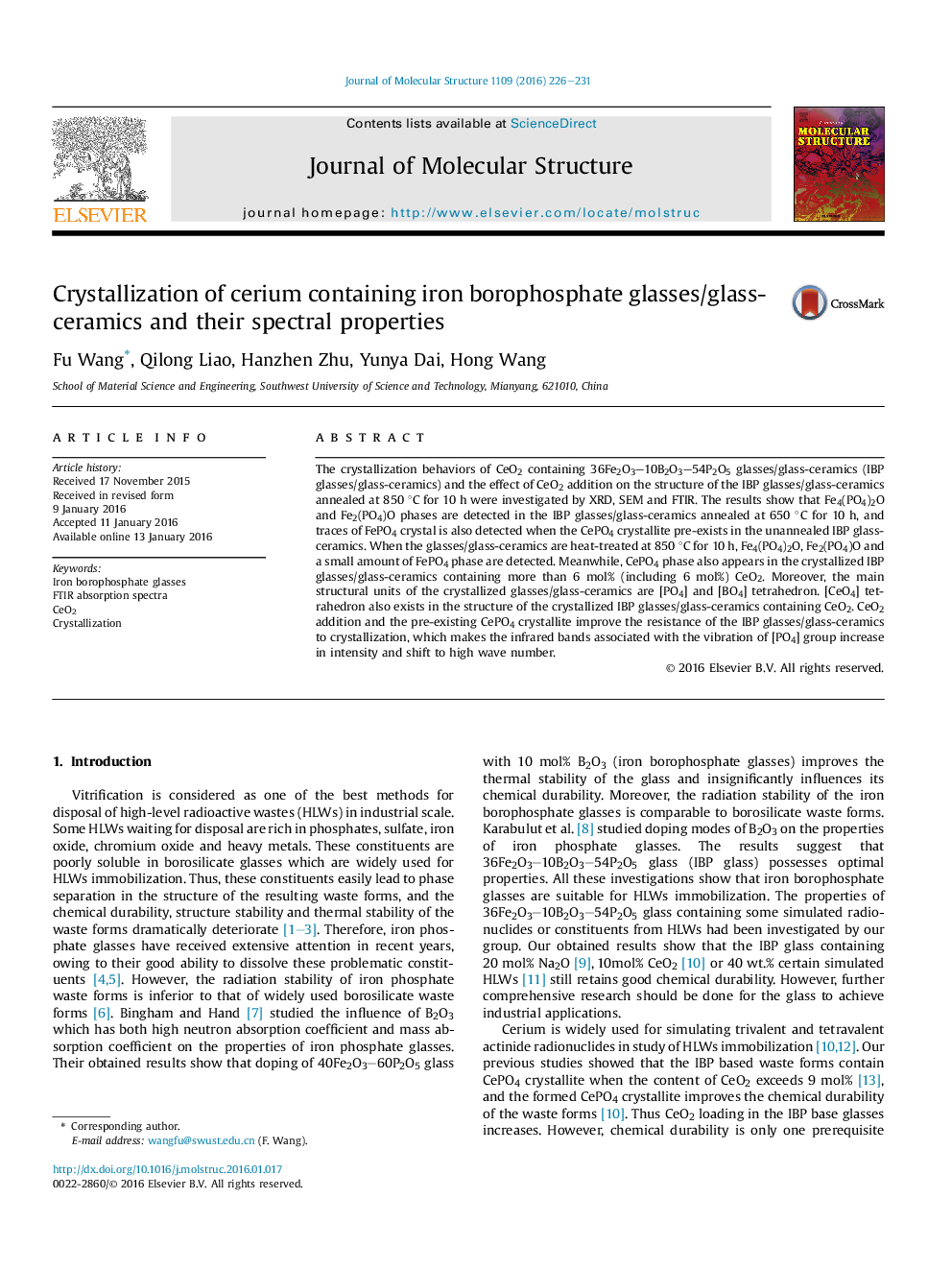| Article ID | Journal | Published Year | Pages | File Type |
|---|---|---|---|---|
| 1409007 | Journal of Molecular Structure | 2016 | 6 Pages |
•The main phases of the crystallized IBP glasses are Fe4(PO4)2O and Fe2(PO4)O.•CeO2 addition and CePO4 crystallite suppress the crystallization of the IBP glasses.•CeO2 addition makes the IR bands associated with [PO4] increase in intensity.•CeO2 addition makes the IR bands associated with [PO4] shift to high wave number.
The crystallization behaviors of CeO2 containing 36Fe2O3–10B2O3–54P2O5 glasses/glass-ceramics (IBP glasses/glass-ceramics) and the effect of CeO2 addition on the structure of the IBP glasses/glass-ceramics annealed at 850 °C for 10 h were investigated by XRD, SEM and FTIR. The results show that Fe4(PO4)2O and Fe2(PO4)O phases are detected in the IBP glasses/glass-ceramics annealed at 650 °C for 10 h, and traces of FePO4 crystal is also detected when the CePO4 crystallite pre-exists in the unannealed IBP glass-ceramics. When the glasses/glass-ceramics are heat-treated at 850 °C for 10 h, Fe4(PO4)2O, Fe2(PO4)O and a small amount of FePO4 phase are detected. Meanwhile, CePO4 phase also appears in the crystallized IBP glasses/glass-ceramics containing more than 6 mol% (including 6 mol%) CeO2. Moreover, the main structural units of the crystallized glasses/glass-ceramics are [PO4] and [BO4] tetrahedron. [CeO4] tetrahedron also exists in the structure of the crystallized IBP glasses/glass-ceramics containing CeO2. CeO2 addition and the pre-existing CePO4 crystallite improve the resistance of the IBP glasses/glass-ceramics to crystallization, which makes the infrared bands associated with the vibration of [PO4] group increase in intensity and shift to high wave number.
